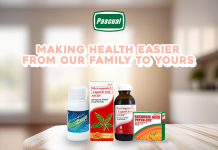The science behind glue
The reason that some substances work well as adhesives, has to do with the structure of the molecules that make up the substance.
Many types of glue are made from proteins. Milk, egg yolk, and animal cartilage (gelatin) are all natural sources of protein for making glue.
Proteins work well because they are often long, branching, stringy chains of molecules. These molecules are mixed into certain liquids to make different kinds of glue.
When the liquid glue is applied to a surface, it seeps into the tiny spaces of the material. The proteins connect to molecules of the material or flow into the pores and spaces.
When the liquid evaporates, the proteins are left behind, connected to the material and hard. If a material such as polished metal or glass has very few pores into which glue can seep, the glue will not stick well to that material.
Activity
Here are a few different kinds of protein glues you can make. Take time to talk about what is happening. Make careful observations looking at the substance as it changes. Talk about the different characteristics (thick, smooth, lumpy, white, grayish, bubbly etc.) as the changes are happening. Careful scientific observation is important to learn.
Safety tips
Make sure that children do not taste their experiments. Also when heating any substance, make sure an adult is supervising the stove.
Milk glue
What you need:
- ½ cup milk
- 2 tablespoons vinegar
- 1 teaspoon baking soda
- 1 teaspoons water
- Paper towel or cheese cloth
- Rubber bands
What to do:
- Add 2 tablespoons of vinegar to 1/2 cup of skim milk. Stir them together and let the mixture sit for two minutes. The vinegar will make the protein in the milk stick together to form small white lumps called curds. The leftover liquid is called whey.
- Strain the curds through the paper towel or cheese cloth. You won’t need the whey to make glue. To make a strainer, put a folded paper towel or cheese cloth over an empty cup. Push it down in the center so it forms a bowl shape. Put a rubber band around the top of the cup to hold the paper towel in place. Pour the curds and whey into the cup with the paper towel. The whey will go through the paper towel and the curds will stay on top. Wait about five minutes for the whey to drain through the paper towel.
- Very carefully scoop out the curds with a spoon. If using a paper towel be careful not to tear the wet tissue.
- Put the curds between two dry paper towels and press down to get all the whey out.
- Put the curds into another cup, stir in one teaspoon water and then add one teaspoon of baking soda. The baking soda reacts with the vinegar that’s in the curds, producing carbon dioxide. If you hold the mixture up to your ear, you can hear tiny bubbles popping. If this mixture doesn’t look like glue, just add some more water.
Basic flour paste
What you need:
- 1 cup whole wheat flour
- 1/3 cup cold water
What to do:
- Blend whole wheat flour with cold water to make a liquid paste (about the consistency of pancake batter if it is still too thick add a bit more water).
- Beat until the mixture is free of lumps, and then gently heat until boiling, while constantly stirring.
- Allow to cool before using.
- Store in an air-tight container.
- If the paste hardens, soften by mixing in small amounts of warm water as needed.
Basic waterproof glue
What you need:
- 6 tbsp water
- 2 packets unflavored gelatin (Approx. 20 grams)
- 2 tbsp white vinegar
- 2 tsp glycerine
What to do:
- Bring water to a boil.
- Remove from heat and stir in gelatin until it is dissolved.
- Add vinegar and glycerin and stir well. Let the mixture cool slightly and pour into a jar and seal tightly.
Tips on using your self-made glue
This glue is best applied while warm. Apply to surfaces using a brush. Glue will gel after a few days. To re-use you need to warm the glue by placing the jar in a pan of hot water. Good for binding leather to leather, fabrics to cardboard, paper to paper.




